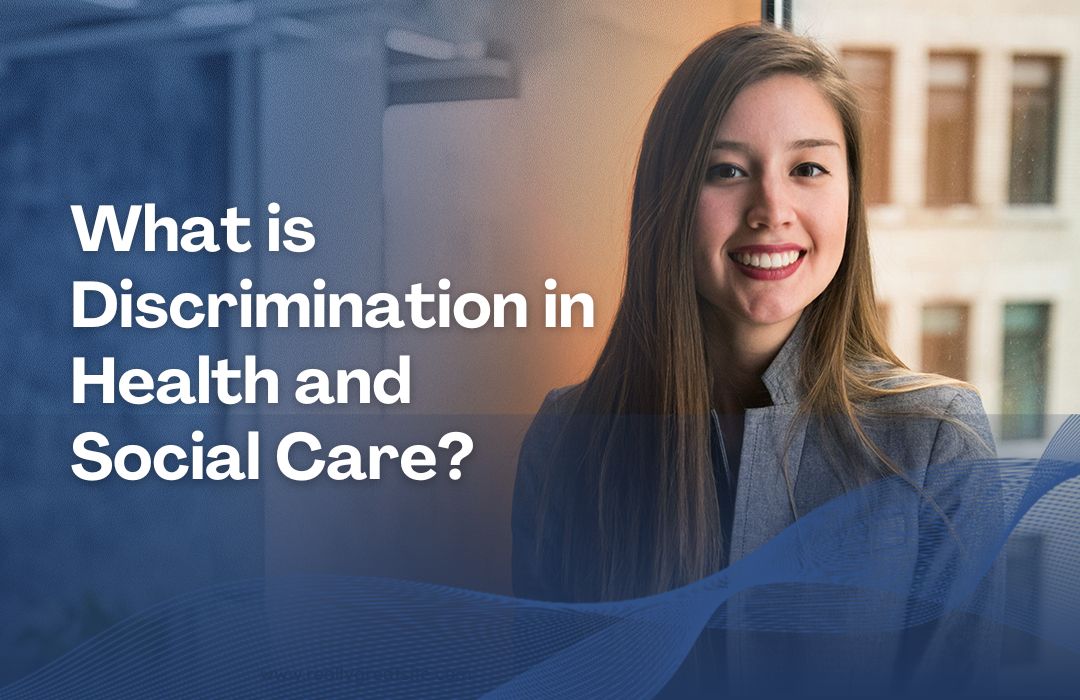1. Introduction
Discrimination in social and health care can have serious repercussions for people who are looking for support and medical care. It happens when people or groups are treated unfairly because of their socioeconomic class, gender, age, race, disability, or religion. Maintaining a just and moral healthcare system depends on ensuring equitable and fair access to medical care.
In order to provide equal opportunities for all patients, this article examines the various forms of discrimination in the health and social care sectors as well as ways to prevent it.
2. What is Discrimination in Health and Social Care?
In the context of health and social care, discrimination is when someone is treated unfairly or unequally because of their socioeconomic background, gender, race, disability, or sexual orientation. This may result in psychological anguish, worse health outcomes, and restricted access to resources.
In order to foster an inclusive atmosphere where everyone receives equal and high-quality healthcare, healthcare practitioners must acknowledge and eliminate discrimination.
3. Examples of Discrimination in Health and Social Care
The following are some typical instances of prejudice in social and health care settings:
- denying a patient care because of their country or race.
- assuming that an elderly patient lacks the capacity to make decisions regarding their own care.
- failing to offer patients who don’t speak the local language with interpreters.
- disregarding demands for particular cultural or religious care customs.
- preventing a disabled person from accessing suitable medical facilities.
These incidents demonstrate the necessity of raising awareness and taking preventative action to end discrimination in healthcare environments.
4. What is Discrimination in Healthcare?
When people are denied services or treated unfairly because of their personal characteristics rather than their medical needs, this is known as discrimination in the healthcare industry.
This may lead to:
- Treatments and diagnosis delays
- A rise in health inequalities
- Care for underprivileged communities is of lower quality.
Legally and morally, healthcare professionals must provide fair treatment and deal with discrimination when it occurs.
5. 4 Types of Discrimination in Health and Social Care
There are four main types of discrimination in health and social care:
- Direct Discrimination – When an individual is treated unfairly explicitly because of a protected characteristic (e.g., refusing to treat someone based on their race or disability).
- Indirect Discrimination – When policies or practices disproportionately disadvantage certain groups (e.g., requiring only written forms, which may exclude individuals with dyslexia or language barriers).
- Harassment – Creating a hostile environment through offensive comments, jokes, or intimidation based on personal attributes.
- Victimization – Retaliating against individuals for raising concerns about discrimination.
6. What is Indirect Discrimination in Health and Social Care?
When a regulation or policy applies to everyone but disadvantages some groups, it is considered indirect discrimination.
One example would be requiring all patients to complete medical forms in English without the need of a translator.
limiting appointment scheduling to working hours, which disadvantages people with rigid work schedules.
creating hospital rooms that are inaccessible to people in wheelchairs.
Healthcare providers need to consider whether their policies inadvertently disadvantage or exclude particular groups.
7. Examples of Discrimination in Healthcare
In healthcare settings, discrimination can take many forms, including:
- Age discrimination is the belief that elderly people are incapable of making knowledgeable medical decisions.
- Treating male and female patients differently because of gender stereotypes is known as gender discrimination.
- Disability discrimination is when people with disabilities are not given the appropriate medical support.
- Making assumptions about a patient’s health because of their ethnicity is known as racial discrimination.
- Prioritizing treatment for affluent patients over those with lower incomes is known as socioeconomic discrimination.
To address these problems and guarantee equitable treatment for all, regulatory changes, education, and awareness campaigns are needed.
8. Inadvertent Discrimination Meaning in Care
Unintended discrimination occurs when medical personnel unintentionally treat someone unfairly due to ignorance or unconscious bias.
Examples:
- A delayed diagnosis may result from a clinician presuming a female patient is exaggerating her suffering.
- a hospital disregarding dietary requirements due to cultural or religious beliefs.
- Assuming that a patient is incapable of making decisions for themselves, a nurse may address the patient’s family rather than the patient.
To reduce inadvertent discrimination, healthcare personnel must get continual training to improve patient-centered care and cultural competency.
9. How to Prevent Discrimination in Healthcare
Healthcare organizations can take proactive steps to eliminate discrimination and ensure an inclusive environment:
- Training and Education: Provide ongoing training on equality, diversity, and inclusion (EDI) for healthcare staff.
- Policy Implementation: Establish anti-discrimination policies and ensure all staff adhere to them.
- Accessible Healthcare: Offer interpretation services, disability-friendly facilities, and flexible appointment times.
- Patient Advocacy: Encourage patients to voice their concerns and establish clear complaint resolution procedures.
- Regular Monitoring: Assess patient satisfaction and healthcare outcomes to identify disparities and address them promptly.
Creating a culture of respect, awareness, and accountability will lead to a fair and inclusive healthcare system.
10. Conclusion
Discrimination in social and health care has a detrimental effect on patient outcomes and undermines public confidence in the medical establishment. Healthcare professionals can put in place policies that support justice and inclusivity by being aware of the different forms, manifestations, and effects of discrimination.
Promoting diversity, inclusion, and equality ensures that everyone, irrespective of background, gets better healthcare. Healthcare professionals must be committed to proactive efforts and lifelong learning if they want to end prejudice and discrimination in medical settings.
By adopting inclusive practices, we can build a healthcare system that treats everyone with dignity, fairness, and respect.







